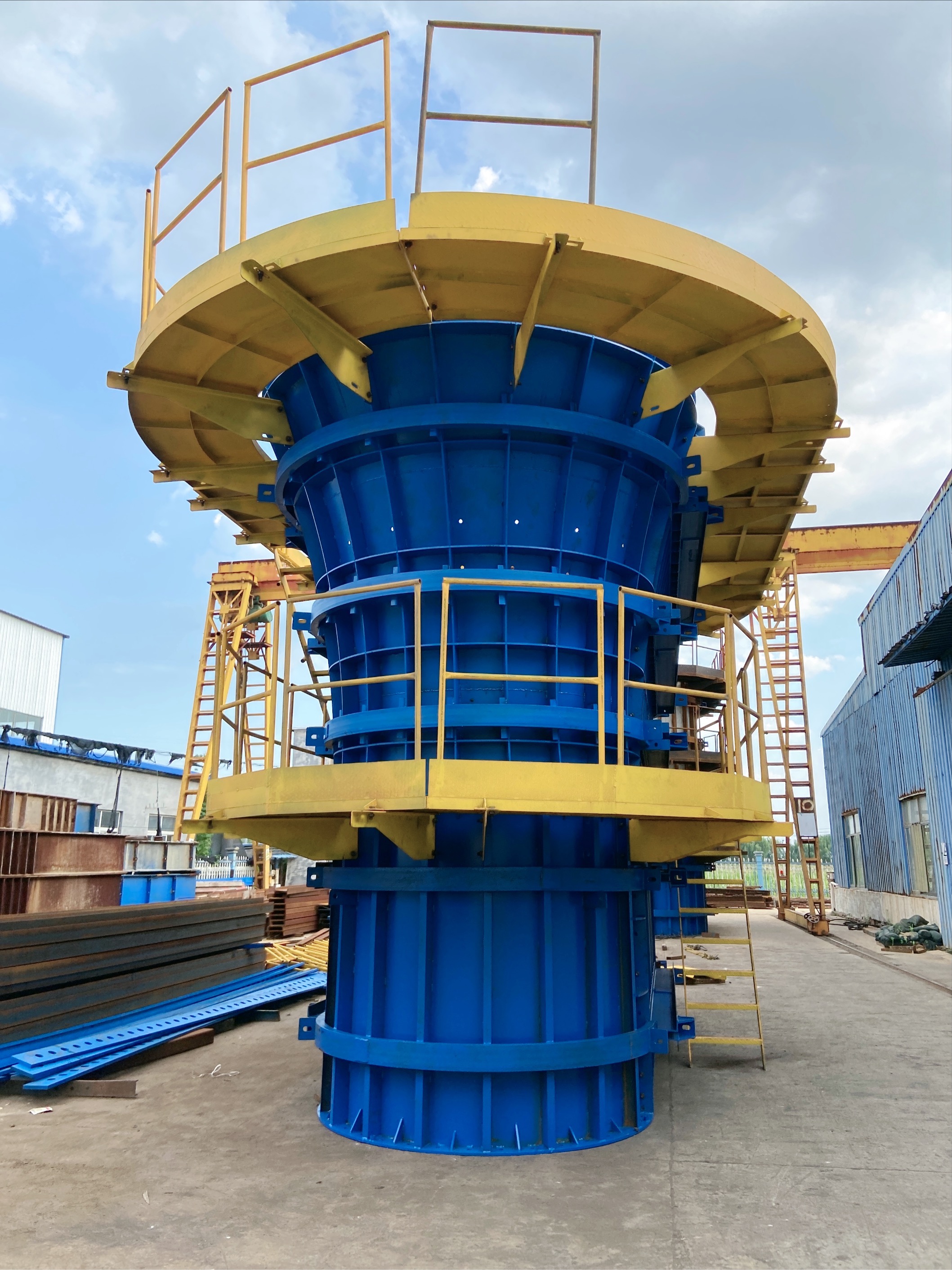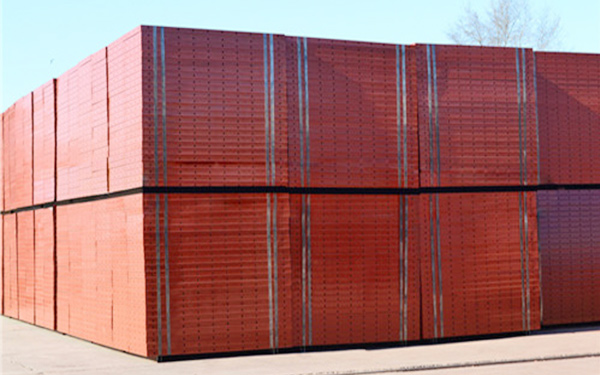Current position:
Home
News home
Industry News
Customized specifications for steel formwork: What factors need to be considered in calculating the weight of steel formwork?
Customized specifications for steel formwork: What factors need to be considered in calculating the weight of steel formwork?
source:Shandong Tianhong Heavy Industry Co., Ltd
Abstract:
The weight calculation of steel formwork requires comprehensive consideration of multiple engineering technical parameters. The following are the key influencing factors and corresponding calculation methods:
1、 Material attribute factors
Steel density
There is a significant difference in density among different materials:
The density of Q235 steel is 7.85g/cm ³, while the density of high-strength steel Q345 may increase to 7.87-7.91g/cm ³ due to alloy composition
Stainless steel (such as 304) has a density of 7.93g/cm ³ and requires special labeling of the material model
Thickness deviation
The thickness tolerance caused by the rolling process needs to be compensated for:
The actual thickness of 6mm steel plate may be 5.75-6.25mm, and the theoretical weight needs to be corrected according to the measured average value
2、 Structural design parameters
Key points for calculating the weight of component types
Panel area=length x width, weight=area x thickness x density
Strengthen the calculation of ribbed channel steel/I-beam according to the profile formula, for example:
text
Copy Code
-Weight of I-beam=(web height x web thickness+flange width x flange thickness x 2) x 0.00785 x length: ml-citation{ref="11,13" data="citationList"}
-Weight of angle steel=width x thickness x 0.015 x length (Q345C angle steel): ml citation {ref="12" data="cityList"}|
|Connecting piece | Weld metal is calculated based on the overlap area multiplied by the depth of fusion, and bolts and nuts are accumulated based on the number of pieces|
3、 Additional impact of process
Forming process
The unfolded length of the bent steel plate requires an increase in arc length compensation. The relationship between the arc radius R and the plate thickness t is as follows:
When R ≤ 5t, the correction coefficient for neutral layer offset is taken as 0.33
Punching template needs to deduct hole area (deducted when single hole>0.3m ²)
Surface treatment
The weight gain of galvanized layer is calculated as 30-50g/m ², and the weight gain of spray painting is about 5-8g/m ²
4、 Application scenario correction coefficient
Security redundancy
Bridge and other high load scenarios require 5-8% weight redundancy, corresponding to strength enhancement design
Transportation billing standards
Road transportation is charged based on gross weight (theoretical weight+packaging material weight), with packaging tare weight typically accounting for 0.5-1.2%
Example calculation:
The size of a Q235 steel formwork panel is 2m × 1m × 8mm, including 3 10 # channel steel reinforcement ribs (each 2m long):
Panel weight: 2 × 1 × 0.008 × 7850=125.6kg
Weight of channel steel: 100mm × 48mm × 5.3mm Specification Single weight 10kg/m, total weight 3 × 2 × 10=60kg
Total weight=125.6+60=185.6kg (excluding connectors)
Note: BIM software is required for 3D modeling and weight verification in actual engineering, and the error can be controlled within ± 1.5%.
Steel density
There is a significant difference in density among different materials:
The density of Q235 steel is 7.85g/cm ³, while the density of high-strength steel Q345 may increase to 7.87-7.91g/cm ³ due to alloy composition
Stainless steel (such as 304) has a density of 7.93g/cm ³ and requires special labeling of the material model
Thickness deviation
The thickness tolerance caused by the rolling process needs to be compensated for:
The actual thickness of 6mm steel plate may be 5.75-6.25mm, and the theoretical weight needs to be corrected according to the measured average value
2、 Structural design parameters
Key points for calculating the weight of component types
Panel area=length x width, weight=area x thickness x density
Strengthen the calculation of ribbed channel steel/I-beam according to the profile formula, for example:
text
Copy Code
-Weight of I-beam=(web height x web thickness+flange width x flange thickness x 2) x 0.00785 x length: ml-citation{ref="11,13" data="citationList"}
-Weight of angle steel=width x thickness x 0.015 x length (Q345C angle steel): ml citation {ref="12" data="cityList"}|
|Connecting piece | Weld metal is calculated based on the overlap area multiplied by the depth of fusion, and bolts and nuts are accumulated based on the number of pieces|
3、 Additional impact of process
Forming process
The unfolded length of the bent steel plate requires an increase in arc length compensation. The relationship between the arc radius R and the plate thickness t is as follows:
When R ≤ 5t, the correction coefficient for neutral layer offset is taken as 0.33
Punching template needs to deduct hole area (deducted when single hole>0.3m ²)
Surface treatment
The weight gain of galvanized layer is calculated as 30-50g/m ², and the weight gain of spray painting is about 5-8g/m ²
4、 Application scenario correction coefficient
Security redundancy
Bridge and other high load scenarios require 5-8% weight redundancy, corresponding to strength enhancement design
Transportation billing standards
Road transportation is charged based on gross weight (theoretical weight+packaging material weight), with packaging tare weight typically accounting for 0.5-1.2%
Example calculation:
The size of a Q235 steel formwork panel is 2m × 1m × 8mm, including 3 10 # channel steel reinforcement ribs (each 2m long):
Panel weight: 2 × 1 × 0.008 × 7850=125.6kg
Weight of channel steel: 100mm × 48mm × 5.3mm Specification Single weight 10kg/m, total weight 3 × 2 × 10=60kg
Total weight=125.6+60=185.6kg (excluding connectors)
Note: BIM software is required for 3D modeling and weight verification in actual engineering, and the error can be controlled within ± 1.5%.
Disclaimer: The content provided on this website is for reference only (some information is sourced from the internet). The publication of content information is for the purpose of transmission and does not represent the views of this website. If the content involves copyright issues, please contact the website editor in a timely manner, and we will take appropriate measures to avoid unnecessary losses for both parties.
Related article
- Nearby steel formwork manufacturers: What is the maintenance cycle for stainless steel formwork?
- Pulling out Mountains and Rivers for Win Win - Jining Tianli Employees Celebrate National Day Holiday with Tug of War Competition
- Composite steel formwork rental: What buildings are steel formwork mainly used in?
- Large scale steel formwork manufacturers: What are the advantages and disadvantages of galvanizing treatment for steel formwork?
- Customized processing of bridge steel formwork: how to prevent and deal with unstable formwork support?
- Supply from nearby steel formwork manufacturers: How to extend the service life of formwork in highly corrosive environments?
- Customization of steel formwork specifications: What are the installation steps for steel formwork?
- List of rental prices for steel formwork: Key points for acceptance of bridge formwork after delivery to the construction site
- Renting steel formwork manufacturers: How much does the material of steel formwork affect the price?
- Steel formwork manufacturer: How to deal with and prevent steel formwork running and bursting?
- Rental price of steel formwork: Analysis of key points for concrete construction of bridge special-shaped column formwork
- Nearby steel formwork manufacturers: What are the main functions of steel formwork?
Hot article

- T梁模版
- Pulling out Mountains and Rivers for Win Win - Jining Tianli Employees Celebrate National Day Holiday with Tug of War Competition
- 力“拔”山兮,“河”作共赢——济宁天力员工欢度国庆假期之拔河比赛
- Pulling out Mountains and Rivers for Win Win - Jining Tianli Employees Celebrate National Day Holiday with Tug of War Competition
- Pulling out Mountains and Rivers for Win Win - Jining Tianli Employees Celebrate National Day Holiday with Tug of War Competition
- Pulling out Mountains and Rivers for Win Win - Jining Tianli Employees Celebrate National Day Holiday with Tug of War Competition
- Pulling out Mountains and Rivers for Win Win - Jining Tianli Employees Celebrate National Day Holiday with Tug of War Competition
Recommended article

Customized rental of construction steel formwork: How to prevent and deal with loose joints in steel formwork?

Customized rental of steel formwork: What are the dimensions, specifications, and models of steel formwork?
- Customized rental of construction steel formwork: How to prevent and deal with loose joints in steel formwork?
- Customized rental of steel formwork: What are the dimensions, specifications, and models of steel formwork?
- Steel formwork manufacturer supply specifications: What are the applicable fields for steel formwork
- 力“拔”山兮,“河”作共赢——济宁天力员工欢度国庆假期之拔河比赛
- Pulling out Mountains and Rivers for Win Win - Jining Tianli Employees Celebrate National Day Holiday with Tug of War Competition
- Pulling out Mountains and Rivers for Win Win - Jining Tianli Employees Celebrate National Day Holiday with Tug of War Competition
- Pulling out Mountains and Rivers for Win Win - Jining Tianli Employees Celebrate National Day Holiday with Tug of War Competition
- Pulling out Mountains and Rivers for Win Win - Jining Tianli Employees Celebrate National Day Holiday with Tug of War Competition



